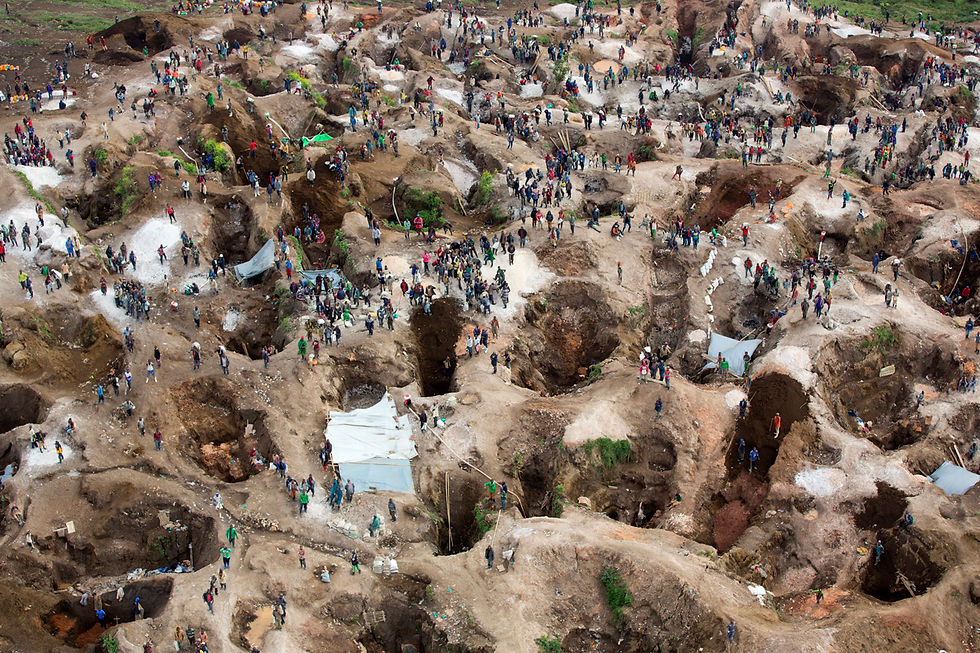Support Youth to Protect DRC Environment
- Danny Mulenda
- Jul 27, 2022
- 4 min read
The DRC is home to the second largest tropical forest in the world with 152 million hectares and it counts about 80 million hectares of arable land. In addition, its water resources represent around 13% of the world's hydroelectric potential. Despite being a resources-rich country, the DRC suffers from deforestation, poaching, river pollution and unsanitary conditions. The DRC has one of the ten highest deforestation rates in the world, with the second largest area of primary forest destroyed in 2020, after Brazil. The destruction of forests, especially when cleared by fire, causes significant damages to the environment and the mankind, further contributing to greenhouse gas emissions - notably considered very dangerous to the development and health of children.

For the first time, UNICEF ranks countries based on children’s exposure and vulnerability to climate and environmental shocks, with Congolese children being the world’s ninth most vulnerable. The Climate Crisis Is a Child Rights Crisis: Introducing the Children’s Climate Risk Index’ is the first comprehensive analysis of climate risk from a child’s perspective. According to the report, Congolese children are particularly exposed to air, soil and water pollution. Nevertheless, the report shows that investments in social services - particularly around water, sanitation and hygiene, but also social protection - have a significant impact while safeguarding children’s future from climate change consequences.
Young people living in DRC are among those most at risk of the impacts of climate change, threatening their health, education, and protection, according to a UNICEF report launched.
Congolese youth are well aware that climate change threatens their future, and they call on decision-makers to act now,” said Edouard Beigbeder, UNICEF Representative in the DRC. We must all act together in a concerted way to build a better world for all children. That's why Congo Bomoko is planning to involve all the children around the world, to come to the DRC every year to plant over 10,000 trees. So they can understand that they need to start being part of the solution for a better future. In the DRC, the young people aged 0 to 24 years represent 67.4% of the Congolese population, of which 48.7% are children under 14 years. When those aged between 0 to 5 years old have 10% to die because of a lack access to clean water and better nutrition. Congo Bomoko is committed to helping Congolese youth take action to protect their future and their planet by raising their voices and participating in the effort to combat climate change and the preservation of their environment.
Youth Congolese hold the key of the Future
Young Congolese today are coming to age in a world beset by crises. Even before the war in the East of the country, and COVID-19 pandemic devastated lives and livelihoods around the world, the socio-economic systems of the past had put the livability of the Congolese at risk and eroded the pathway to healthy, happy, fulfilled lives for too many. Young people are right to be deeply concerned and angry, seeing these challenges as a betrayal of their future. "We are the Congolese youth and we are committed to defending the rights of the child for a more equal, fairer and more sustainable world," said Ketsia, 16 years-old, a Child Reporter trained by UNICEF in Kinshasa. With Congo Bomoko we understand that we have obligations and rights, and we intend to defend them. We want all generations to come together to re-imagine the world of tomorrow under our new philanthropic platform. We are for youth Congolese and the generation to come, and we must act together for the good of all. Let reimagined Congo's future together with all Congolese around the globe, creating more types of venues that can boost more revenues. But we can’t let these converging crises stifle us. We must remain optimistic and we must act.
Our goal are such as: Increase investment in climate adaptation and resilience in key services for children. To protect children, communities and the most vulnerable from the worst impacts of the already changing climate, critical services must be adapted, including water, sanitation and hygiene systems, health and education services. Reduce greenhouse gas emissions. To avert the worst impacts of the climate crisis, comprehensive and urgent action is required. Countries must cut their emissions by at least 45% (compared to 2010 levels) by 2030 in order to keep warming to no more than 1.5 degrees Celsius. Provide children with climate education and greens skills, critical for their adaptation to and preparation for the effects of climate change. Children and young people will face the full devastating consequences of the climate crisis and water insecurity, yet they are the least responsible. We have a duty to all young people and future generations. Include young people in all national, regional and international climate negotiations and decisions, including at COP26. Children’s and young people’s voice must be included in all climate-related decision making. Ensure for a green, low-carbon and inclusive recovery, so as not to compromise the ability of future generations to cope with climate change.
The next generation are the most important and most affected stakeholders when talking about our global future and we owe them more than this.
.png)



Comments